A valve amplifier or tube amplifier is a type of electronic amplifier that uses vacuum tubes to increase the amplitude or power of a signal. In audio applications, valves continue to be highly desired by most professional users, particularly in recording studios’ equipment and guitar amplifiers. Among stereo enthusiasts, there is a subgroup of audio buffs who advocate the use of tube amplifiers for home listening; they argue that tube amplifiers produce a “warmer” or more “natural” valve sound. Tube sound (or valve sound) is the characteristic sound associated with a vacuum tube-based audio amplifier.
Before the rise of the transistor in the 1950s, all amps used vacuum tubes. Still the audible significance of tube amplification on audio signals is a subject of continuing debate among audio enthusiasts. Audiophiles disagree on the relative merits of tube vs solid state amplification. Tube amplifiers have retained a loyal following amongst some audiophiles and musicians. Some musiciansprefer the distortion characteristics of tubes over transistors for electric guitar, bass, and other instrument amplifiers.
Today tubes are the incandescent light bulb of the audio world: an older, relatively inefficient technology that consumes a good deal of energy to output a modest amount of power. For power amplifiers solid state designs can be manufactured without output transformers and are therefore immune to speaker-dependent impedance mismatches and transforer effects. I have been long the person who has usef transistors for hifi applications and considered they to be better for hifi amplifiers.
Tubes have their place in audio processing where you want to add to the sound the “warm tube distortion” sound (for example in guitar amplifiers). For preamplifer use tubes can work well. To get the idea of tube sound and how tube preamps works, I got this cheap kit for experimenting: AC12V/1A Stereo 2.0 Pre Amplifier Headphone Module Amplifier Buffer Board. It is a preamplifer that is suitable for conntrolling volume of line level audio signals (attenuate or amplify) and maybe add some magic tube sound to audio. Cheap way though of experiencing ‘tube sound’!
Type: FE-6J1-2.0B
Channel type: 2.0/ stereo
Power input: AC12V 1A / 5.5*2.5 plug
Knob function: Power switch / volume control
Size: 76 x 74 x 20mm
Pre-amp tube diameter: 18mm
Everything was packed to a plastic bags.
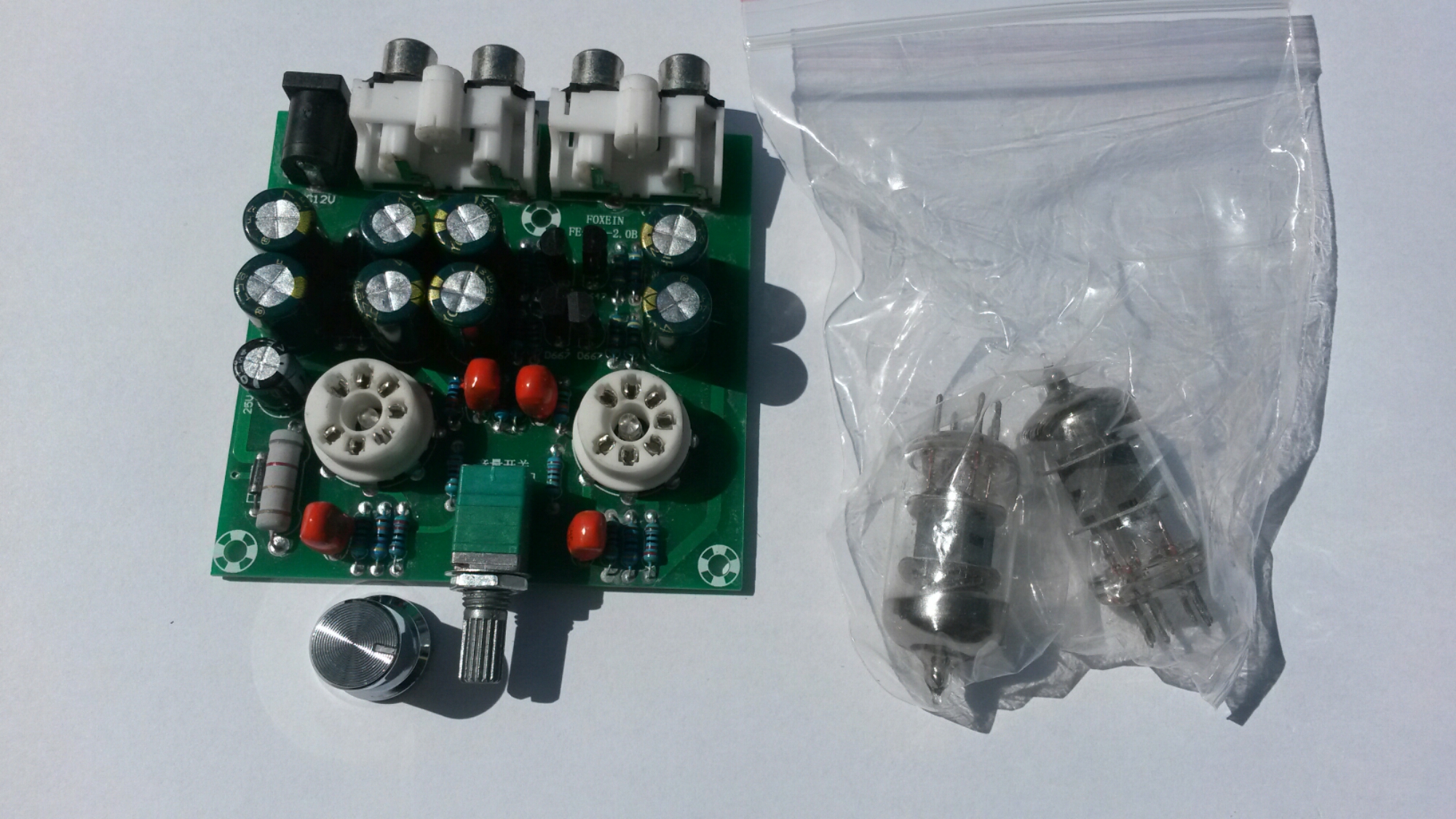
There seem to be some small LEDs in the center of tube sockers. Those are blue LEDs that make the tubes to glow in blue color.
One tube installed.
The volume control in this board is combined volume control and power switch: The knob rotates counterclockwise to reduce the volume, when the volume to the hour, continues to rotate, until the “tick” sound, then power off, lights out.
A look to the connectors…
On the left side: Audio signal input terminals that can be connected to mobile phones, computers, MP3, MP4, and other music player.
On the right side: The output terminal of the audio signal can be connected to an audio signal input terminal of a power amplifier and a power amplifier board. And next to them power input (12V AC 1A).
When I powered the amplifier, it did what it promised. It worked OK as a preamplifier.
Voltage amplification can be controlled from zero to around 6 times (around 15 dB).
The output worked on testing well to over 2Vpp input signal amplitudes at maximum amplitude without noticeable distortion on oscilloscope screen starting to appear.
The signal output impedance is around 3 kilo-ohms. That works well as line level signal preamplifier that drives power amplifier. This circuit is not headphone amplifier that drives headphones (if you thing if that from product name), it would would be pretty non-ideal headphone amplifier for low impedance headphones.
Does what it describes as preamplifier for audio signals. It sounds good, but I can’t find it to be adding any magic “tube sound” to the audio. The circuit adds some slight huming though (at more than about 1/3rd volume).
Note on powering: you need an (not DC) 12V plugpack or transformer. The kit says it needs 12V 1A power supply, so that what I used (I did not measure the actual power this circuit takes).
Ti get better idea how this circuit amplifier works, a circuit diagram would be nice. With some Googling I found that there are several pages that tell about this or very similar tube amplifiers:
https://www.circuitlab.com/circuit/9vnehk/fever-6j1-tube-pre-amp-circuit/
http://www.diyaudio.com/forums/tubes-valves/286349-6j1-tube-buffer-circuit-diagram.html
The best circuit diagram I could found was this at https://www.circuitlab.com/circuit/9vnehk/fever-6j1-tube-pre-amp-circuit/
It seems to be mostly correct (shows only one channel), but has some small details that do not seem to be correct (for example connection of resistor on amplifier output should be connected to ground and not -28V). By the way the circuit diagram can be edited at https://www.circuitlab.com/editor/#?id=9vnehk
As you can see in the circuit diagram the power supply part converts the 12V AC input to +28V and -28V power rails that are used to power the tube. This means that the tube is run at 56V voltage (which is quite low voltage for an audio tube circuit, they typically operate at 100-300V voltage depending on tube type). This 56V voltage is good for safety – it does not hurt too much if you accidentally come in contact with this voltage when you test the board before putting it to case.
The power supply circuit consists of voltage multiplier + rectifier circuit followed with filter capacitors, some transistor circuitry (emitter follower with current limiting, somewhat resembles gyrator circuit) and more filter capacitors.
The tube heaters are directly powered from input 12V AC (two 6.3V heating coils in series can be powered from 12V AC).
Information on the 6J1 tube used can be found at http://www.radiomuseum.org/tubes/tube_6j1.html and http://greatsound168.pixnet.net/blog/post/254453398-%E4%BA%8C%E5%8F%B06j1%E7%B7%A9%E8%A1%9D%E7%B4%9A%E7%9A%84%E5%88%86%E6%9E%90
Another preamp circuit using 6J1 tube at http://www.yunwt.net/1mydiy/qt14.htm
The basic design of this AC12V/1A Stereo 2.0 Pre Amplifier Headphone Module Amplifier Buffer Board seems to be sensible. If I had designd this I would maybe had designed few things slightly differently (for example power supply filtering and maybe tube heating) – that could have maybe reduced the slight mains humming on the output. Anyways as it isC12V/1A Stereo 2.0 Pre Amplifier Headphone Module Amplifier Buffer Board seems to be good quality cheap tube preamplifier.
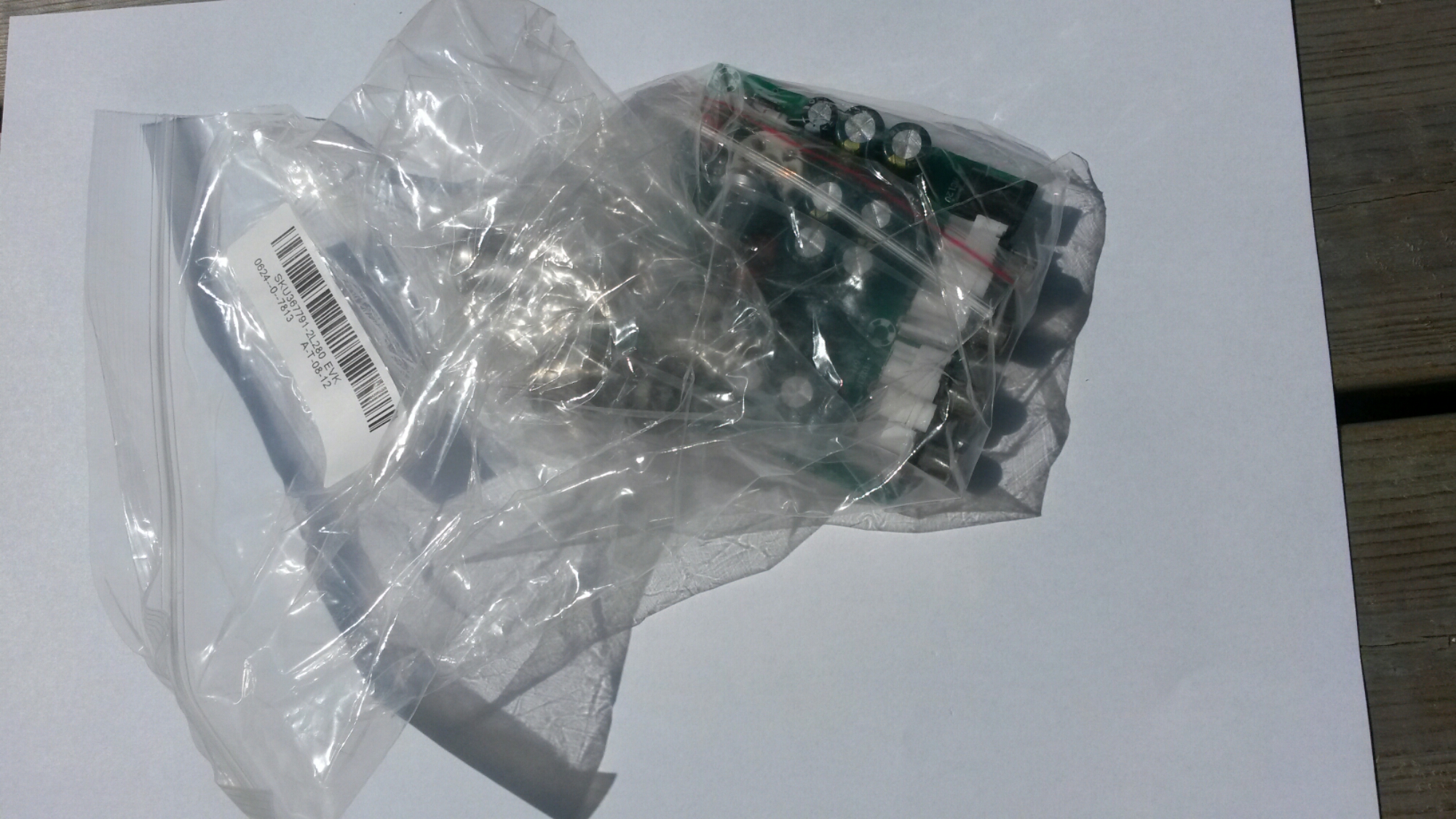
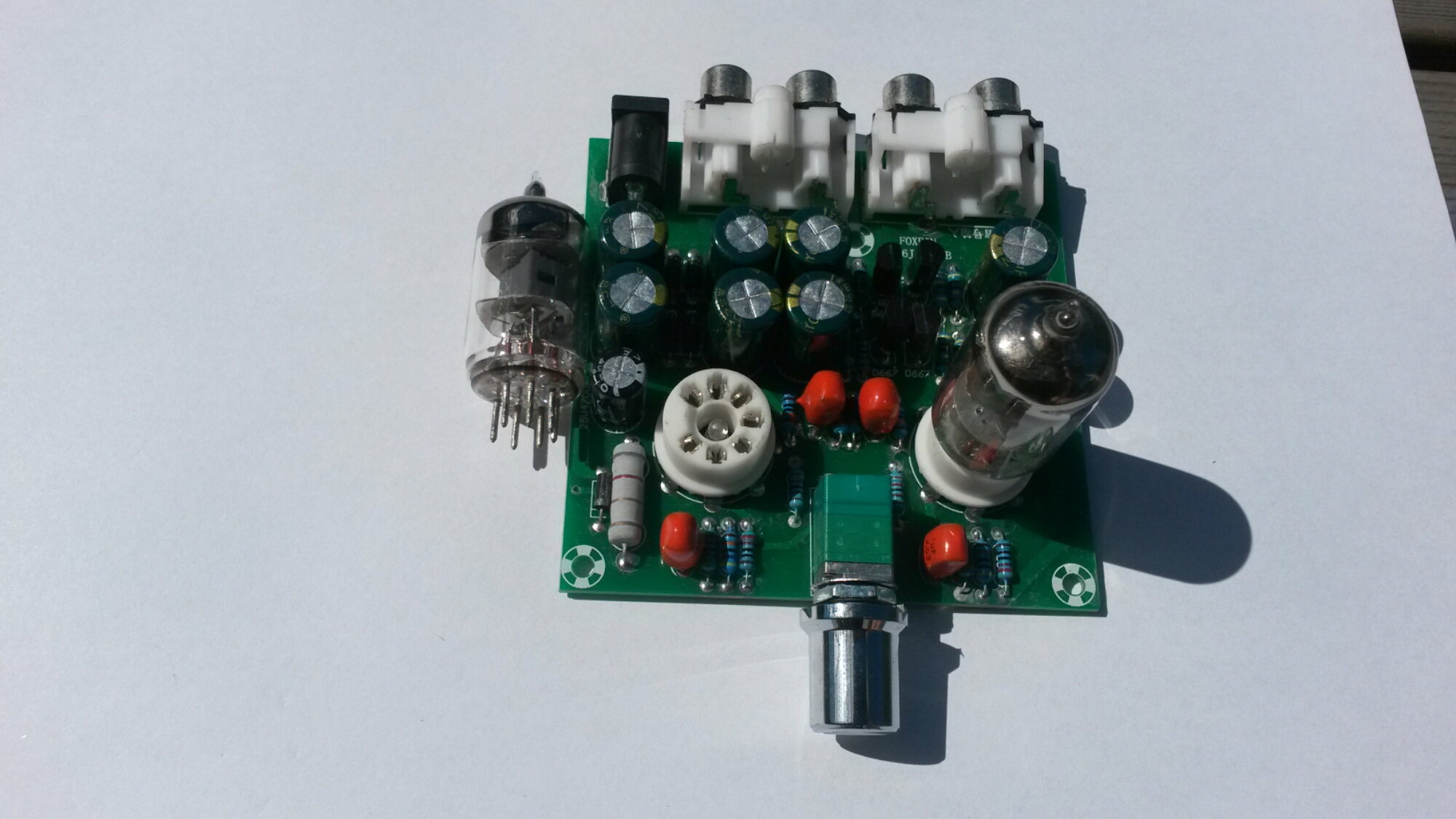
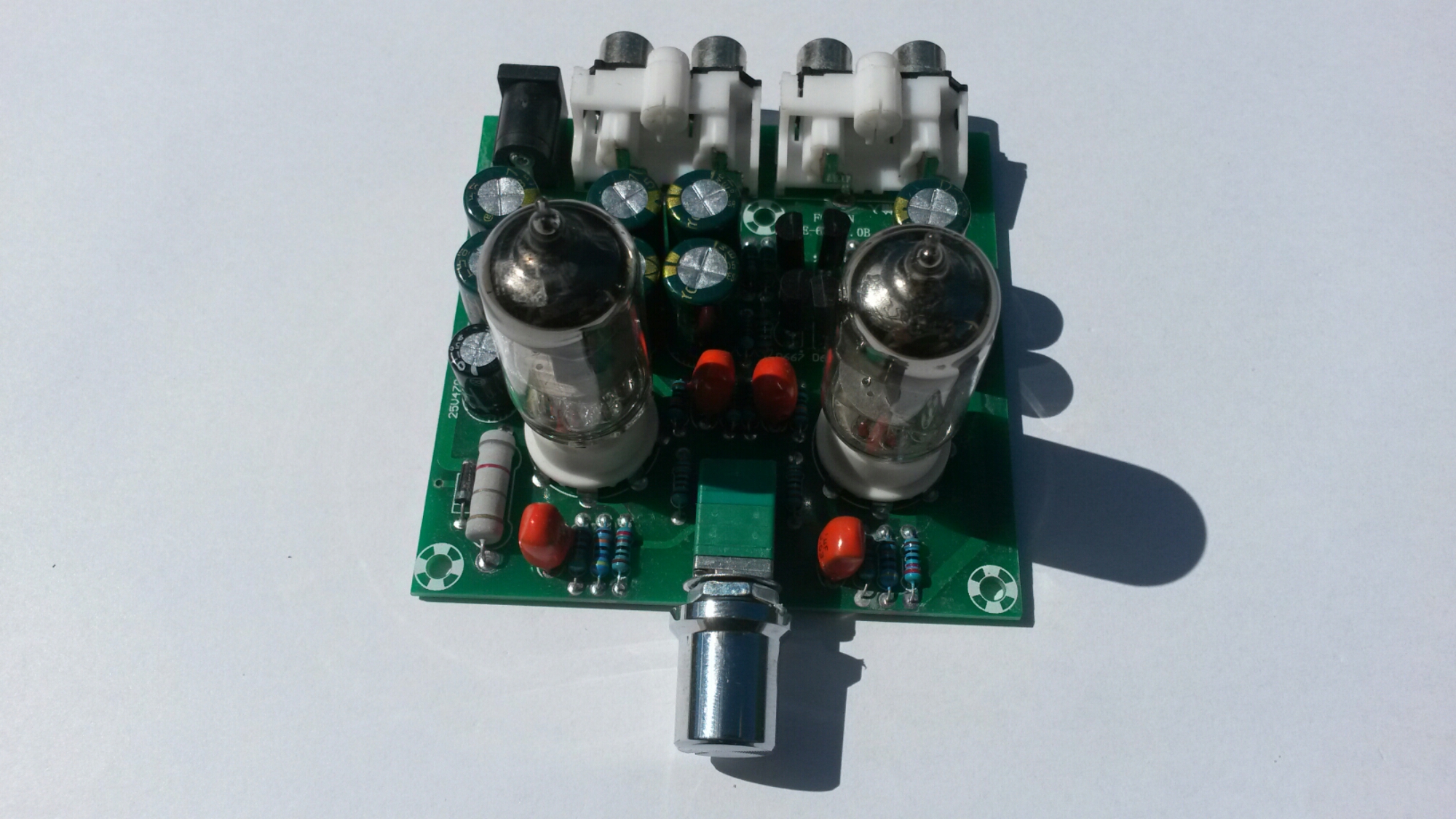
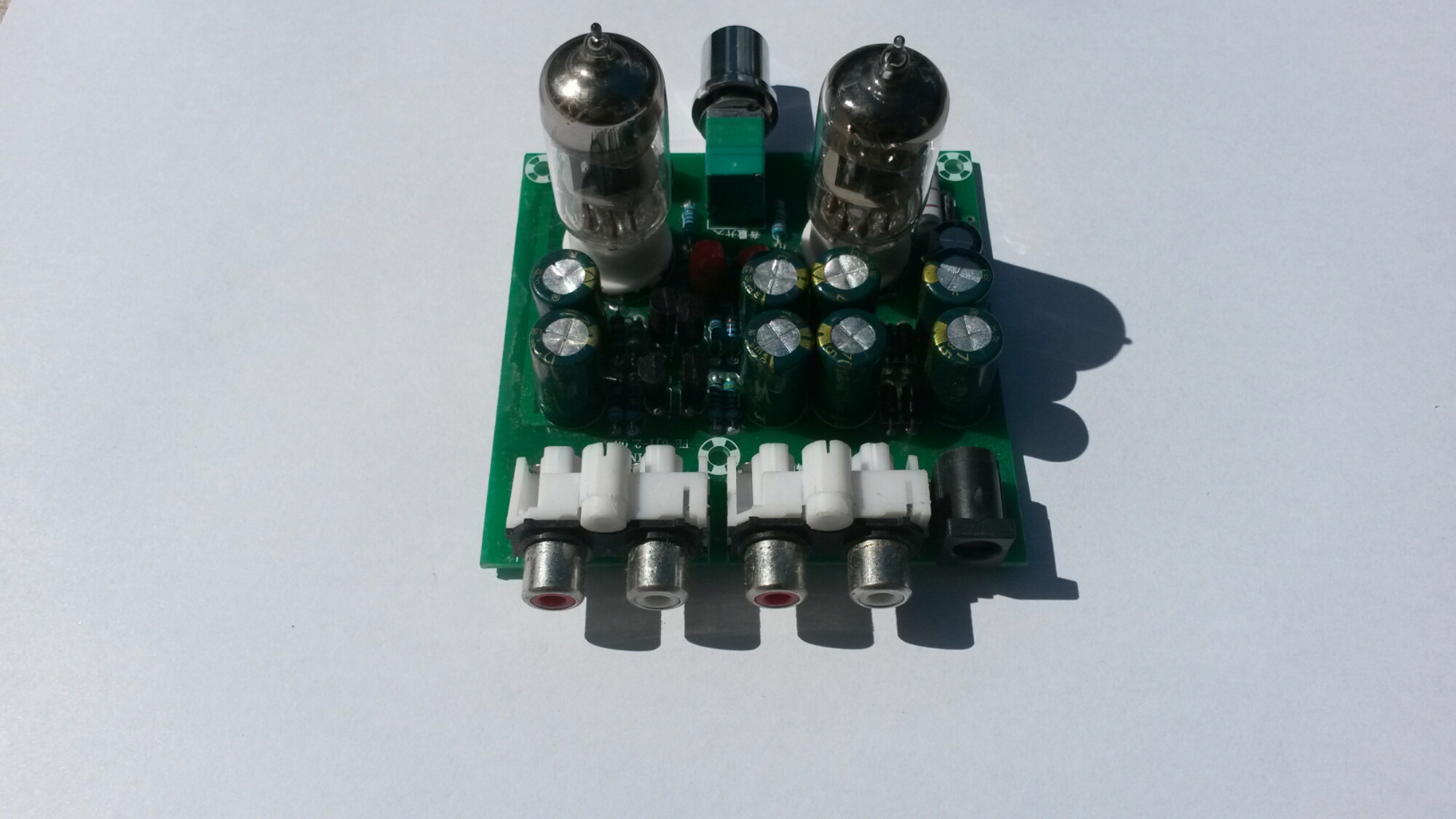
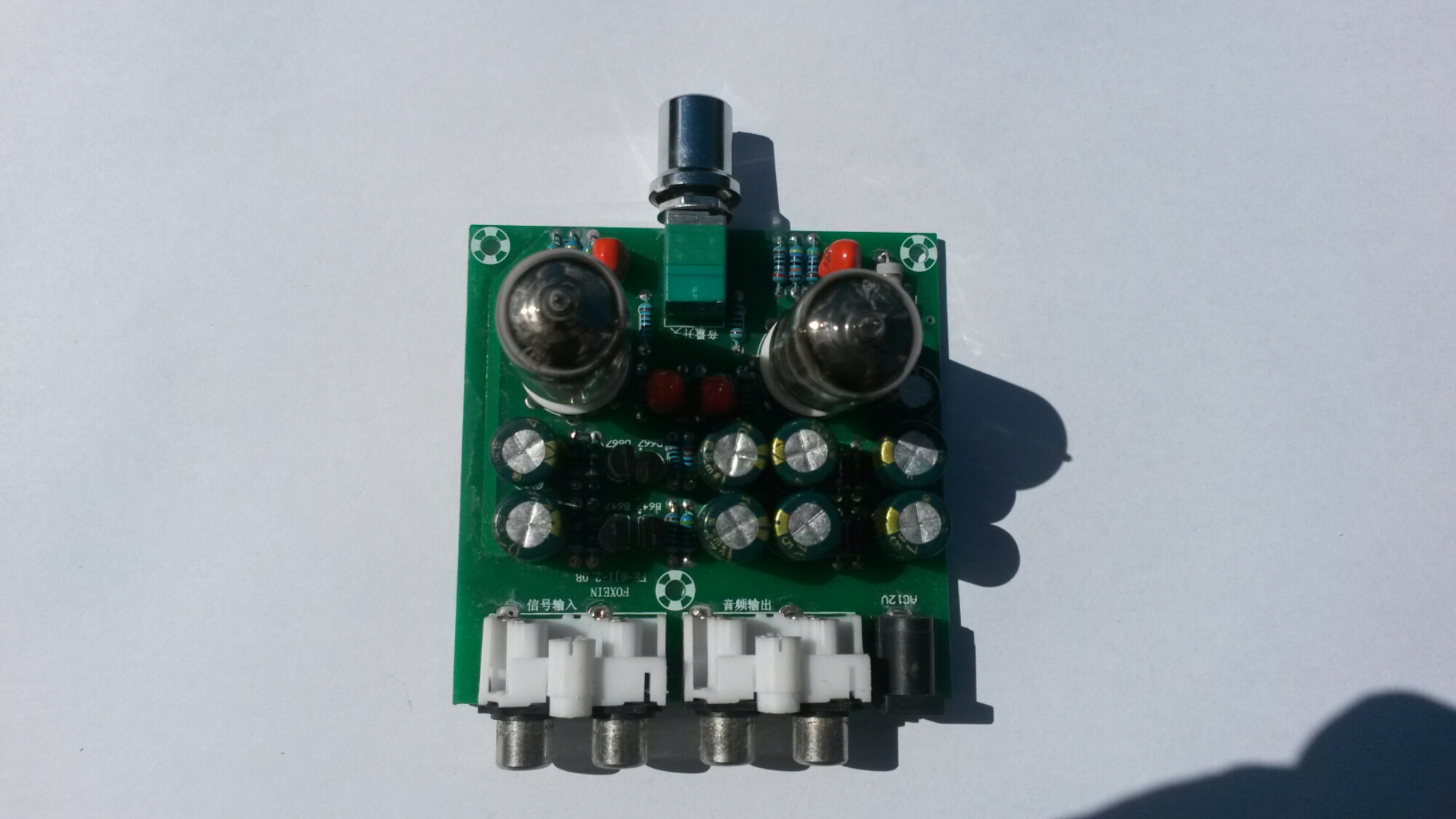
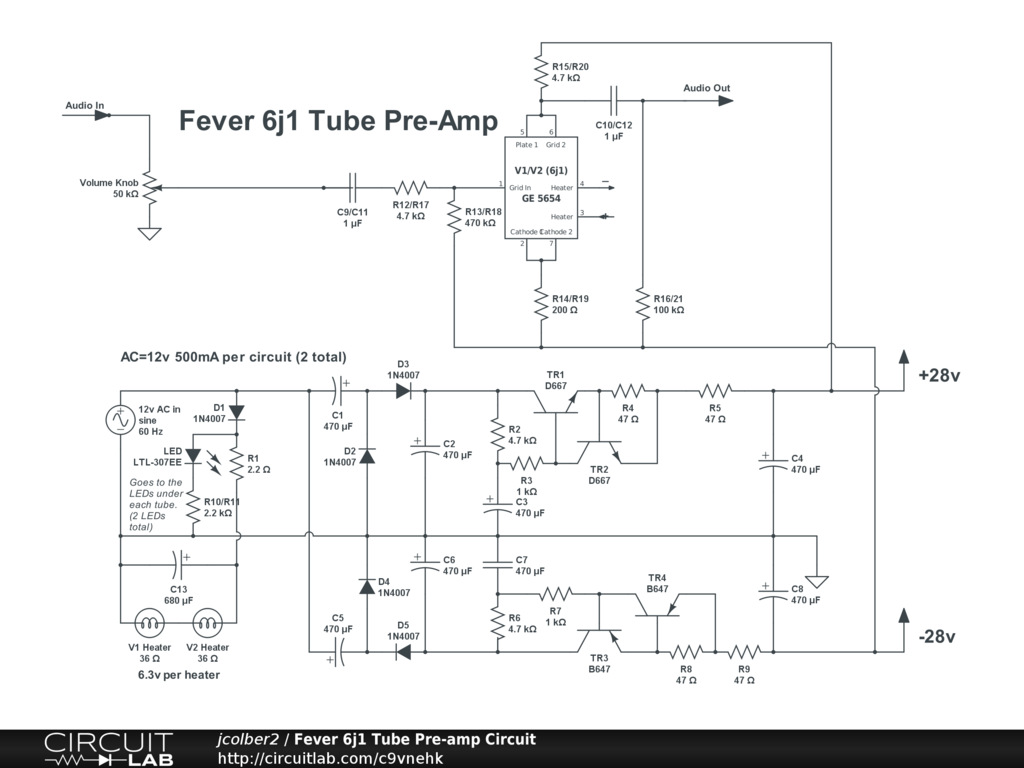
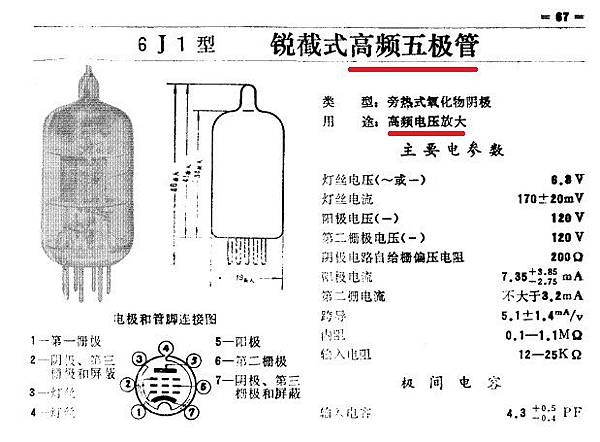
291 Comments
Tomi Engdahl says:
https://atrad-audio.co.nz/turneraudio/www.turneraudio.com.au/index.html
TURNER AUDIO
Hello everyone, from Patrick Turner. I retired from the audio business in 2012.
I no longer manufacture audio amps or speakers or do any repair work.
Last update 22 June 2018.
Size is over 60MB, so download a copy to a CD now.
This website has much information about vacuum tube operation and circuit
analysis and analog test gear. Anyone is free to build their own gear based on
the information about many amplifiers I built between 1996 and 2012.
Tomi Engdahl says:
http://www.nutube.us/?fbclid=IwAR3nVmp906ZYtqxg6Z2h1wA_1rQSSG75DCzhKdeGQfGBgxX9vZVhcq0lUS4
Tomi Engdahl says:
https://www.facebook.com/groups/DIYAudio/permalink/6502944706437987/
If valve amps add harmonics, the pleasant even ones, to the original source, how can it be called high fidelity? Was reading Briggs and Garners excellent old book on amps, but the authors left it to listener’s pleasant experience to sum up all!
Tube amp addiction is not about science, it’s about sound. As an electrical engineer of 42 years, I’ve given up on “arguing” about the so called superiority of tube amps. People who like them, REALLY like them and that’s the end of it.
A valves are no more likely to add even harmonics and sound warm/nice than solid-state devices. It’s the topology that influences the harmonic distribution. Transistors have been synonymous with class B push-pull topologies since the 70s because those amps were cheaper to make. Before that, valve amps were more expensive and utilised different topologies, many of which were single-ended class A (lots of even harmonics). There is no single definition of HiFi that anyone signs up to – this is not medicine. There is science behind it, but few listeners grasp it, so it is indeed, left to the listener to decide, as they are the ones voting with their wallets. It’s a lot like wine in that respect.
It’s not, but stereo itself is a flawed format.. and tube amps while adding harmonics, also add what are in effect multiple delayed signals due to those harmonics passing through the output transformer.. turning single auditory queues into multiple.. resulting in more palpable imaging. So, there is that. Also, harmonics make things seem louder.. so that you don’t need quite as much volume for the same sense of weight and scale.. resulting in less distortion from your loudspeaker. Swings and roundabouts.
You are 100% correct, the load of extra even harmonics enhance some material but detracts from other music. The problem is it leaves it’s thumb print on everything.
Why do vacuum tubes sound better than transistors?
https://audioresearch.com/2020/08/10/audio-research-vacuum-tubes-technology/#:~:text=As%20such%2C%20tubes%20maintain%20signal,sound%20leaner%20and%20less%20natural.
Chuck Wallbaum this may be of interest if you’ve not come across this particular take before
https://audioxpress.com/article/Musicality-and-Distortion-A-Conversation
Tomi Engdahl says:
https://hackaday.com/2023/07/08/roll-your-own-simple-tube-tester/
Tomi Engdahl says:
https://www.milkenreview.org/articles/russias-stranglehold-on-vacuum-tubes
Tomi Engdahl says:
https://www.reddit.com/r/BudgetAudiophile/comments/12sndgn/are_fake_tube_amps_really_fake/
Are “Fake” tube amps really Fake?
I initially dismissed all of the Aiyima/Fosi/Douk stuff as I was aware that all the amplification was solid state even the models, I was reading an audio science review thread about the Fosi T3 (it was nearly 50% off) and they seemed to have the same opinion.
So I started looking at DIY’ing a tube preamp, I came across Franks 6sn7 preamp on DIY audio and the folks over there treat it as the holy grail of 5sn7 amps. But interestingly it has 0 gain, the tubes are just a buffer before an attenuator, as they say modern sources are loud enough to not need amplification.
And this got me thinking, these budget tube amps doing the same thing and do they actually add 2 order harmonic distortion? Looking for a technical answer rather than a subjective experience Ty
Ty
The “audiophile” goal is different for many. Some seek the purest and most accurate form of sound reproduction, where as others focus on reproduction in a different way.
For example: most people will tell you that a ported sun isn’t as good as a sealed sub. Sealed subs are “tighter” and “faster” than a ported. I, however, prefer a ported sub specifically for its characteristics, slightly softer, a little bit more wobbly and warm.
Being an audiophile is all about being fascinated with audio, in whatever way brings you the most joy.
“No it’s not, being an audiophile is about endlessly fiddling with gear while only being interested in music as something to test your gear with!”
I used to design and build tube amplifiers, but for electric guitar instead of hifi. The purpose of guitar amplifiers is to deliberately colour the sound, an electric guitar into a neutral amplifier and neutral speakers sounds boring and crappy. Guitar speakers are extremely non linear and have a huge impact on the guitar tone. Also, a lot of tube amps don’t use negative feedback loops (very low damping) so the interaction between the impedance curve of the speakers, the room and the amplifier actually causes additional coloration.
So I get the purpose of tubes, it’s very inspiring for a musician to plug into a tube amplifier on high volume. It’s really an awesome experience even for non guitar players just to hit an open D power chord (drop D guitar) on a loud tube amp, it hits you right in the feels. Or play a bass guitar or organ through a loud tube amp.
But for hi-fi, you don’t want coloring and you want high damping. The purpose I see for tubes is that they can provide very linear operation with zero to very limited negative feedback loops like solid state requires. Also you can get away with less components in the signal chain, but I’m not completely sure of modern solid state designs. Another purpose is indeed the compression/overdrive artifacts, that’s nothing more than coloring the sound, like the 0 gain preamp.
Regarding the fake tubes: that’s another topic: the common audio tubes that we all know are designed to run on high voltages in the rough range of 200-500 VDC. This requires expensive components and it is a safety thing. Solid state amps apply lower voltages. So if you add one small tube to a solid state design, is easier and cheaper to let it run on low voltage. Designers are able to do that, but then there not much amplification and likely it’s just adding coloration by the additional components in the signal chain. It’s like using a Ferrari for doing groceries down the road where you’ll reach a top speed of 30 mph: a lot of hassle without apparant benefits other than looking cool.
Tomi Engdahl says:
https://audiokarma.org/forums/index.php?threads/fake-tube-amps.842026/
Recently discussed in another thread:
https://www.wsj.com/articles/addict…VjIeYHDC/7N4A==&reflink=article_copyURL_share
In the “Comments” section of the WSJ article, a reader made reference to a very interesting thread concerning “fake” Chinese tube amps, the NobSound MS-10D MII specifically. Seems this has become a very popular budget amp, and has spawned a large following, with much discussion of tube rolling and the sound quality improvements made with tube substitution.
Problem is, if the the tech who authored the OP is correct, the tubes on this amp are not even in the audio chain, and light up only because of a circuit feeding power to them. Removing the tubes altogether makes no difference in amp performance. The “real” amp inside is all solid state.
Would love to hear from genuine techs who can confirm or discount this claim.
Tomi Engdahl says:
Exposure of fake Chinese tube amplifier Nobsound MS-10D MKII.
https://www.stereonet.com/forums/topic/246417-exposure-of-fake-chinese-tube-amplifier-nobsound-ms-10d-mkii/
I disassembled a Nobsound MS-10D MKII and found it was an imitation of a tube amp. An empty box was attached on the top of the amp, that pretends to look like a real tube amp. In the box suppose to be three transformers. One is for power and two for each channel for matching tubes with speakers.
There is only one power transformer under the box, which delivers 17V to output transistors, 7V to microchips and 6.8V to tubes. As we see there is not the high voltage for the tubes. The transformer is not high-quality, noisy. I had to repair it.
The Amplifier without tubes or without at least one tube does not work.
It is clear that the signal is not amplified in the tubes, but somehow participates in the work. A circuit diagram is very difficult to draw, because the circuit is on both sides of the board and the details are too small. The preamplifier is made of a chip JRC4558.
Question to the experts.
What function do tubes perform?
Where does the signal on the cathode 6n1p and on the cathode and anode 6p15p comes from, if the signal comes on the 6n1p grid only when tubes are removed?
Yeah, I read the post. I’m still laughing at the claim that some listeners reckon they can hear a difference between different valves.
Best laugh of the day. So far.
Priceless… or should that be worthless.
Tomi Engdahl says:
Building a 1920s Tube Amplifier (And Tubes!)
https://www.youtube.com/watch?v=-UEfqAWb3fE
ENABLE AD BLOCKER Construction of a 1920s style tube amplifier using homemade vacuum tube triodes. Filament consumption is 8 volts at 1.75 amps, B+ is 230 volts at 6 mA. Inspired by glasslingers 1920′s Horn Speaker Amplifier.
ENABLE AD BLOCKER Construction of a 1920s style tube amplifier using homemade vacuum tube triodes. Filament consumption is 8 volts at 1.75 amps, B+ is 230 volts at 6 mA. Inspired by glasslingers 1920′s Horn Speaker Amplifier.
Tomi Engdahl says:
Korgin Nutube taitaa olla uusin tulokas putkiperheeseen: https://www.korgnutube.com/en
Tomi Engdahl says:
https://www.facebook.com/groups/DIYAudio/permalink/7098638130201972/
Hello.. I’m new to DIY with tubes. Is the an explanation about the benefits using tubes? Articles or anything, guys? TIA
No benefits , just disadvantages. Some people enjoy the distortion they make and extra heat to warm their room.
in a nutshel, tubes have even order distortion, transistors have odd order distortion. even order is somehow easier on the senses. if i wanted to research this,i would also look up the transfer function of each.
Nels Johnson – Incorrect. The circuit topology determines distortions. Tube amplifiers were often a single-ended stages because it’s cheap. This is where your even orders come from. Differential stages (example push-pull) cancel even order harmonics and leaving odd order.
Every amplifier in existence adds harmonic distortion. If you can’t detect it, your measuring setup is either incorrect or not sensitive enough. You should measure with a realistic output power and a dummy load, eg. a big 8 ohm power resistor. If the amp is rated at eg. 10W, you should measure at no less than 1W output power.
Transistors in the signal path saturate hard when you overdrive them and cause distortions unrelated to the original signal so they sound awful, whereas tubes become non-linear when overdriven and the built-in compression adds to their pleasant sound. There are also rectifier tubes but they are bad news – solid state rectifiers are vastly superior and do not harm the sound since they are not in the signal path.
The benefit of the pleasure to see and use them is maybe the first. Otherwise, there are maybe some harmonics that they are adding to the sound. This question is delicate and close to a troll……
Many have speculated few have been able to provide evidence as to why people prefer the sound of tubes. I think a consensus could be reached on the theory that the harmonic distortion profile makes for a “warmer” and maybe more realistic sound.
Tomi Engdahl says:
besides tubes itself causing distortion, many tube amplifiers have transformers on the signal route that add their effect. Transformers typically have their non idealities in distortion, frequency response, phase response etc… some of those non-idealities can make the audio sound “warmer” in a nice way or sometimes just bad, sometimes interesting.
Tomi Engdahl says:
Yep. I believe i read Nelson Pass state that he believes it is the output transformers, not the tubes, that cause the even order harmonic distortion profile.
Tomi Engdahl says:
When most people think of tube circuits, the first thing that comes to mind is often the use of high-voltage power supplies. It wasn’t a given for tube circuits, though, as a range of low-voltage devices were developed for applications such as car radios. It’s one of these, an ECH83 triode-heptode, which has taken as the basis of an audio preamplifier circuit……
https://hackaday.com/2023/11/17/a-low-voltage-tube-makes-for-a-handy-preamplifier/?fbclid=IwAR0-pmDK9L3M4D_muUOf2H9ISSh4QdVH-nNskxCjVtFl89KOng00kzCFdtU
ECH83 Guitar Preamplifier with Tone Control on 12V
Simple single tube preamplifier with tone control that includes options for adjusting the bass, midrange, and treble frequencies.
https://hackaday.io/project/193658-ech83-guitar-preamplifier-with-tone-control-on-12v
Tomi Engdahl says:
https://hackaday.com/2023/12/05/a-single-board-computer-with-vacuum-tubes/?fbclid=IwAR0mfIhmUgHag6j2APkf7VNkIFJ_bBpsvHYvo3ht5_eVX9OCLF53DzSY7bY
Tomi Engdahl says:
https://hackaday.com/2023/12/30/tube-design-tips-to-save-a-writers-project/
Tomi Engdahl says:
https://www.reddit.com/r/diytubes/comments/kfjrj9/worlds_smallest_vacuum_tube_1%D0%B625%D1%80_a_penthode/
Tomi Engdahl says:
Nutube
https://youtu.be/KMCtOBAk4_o?si=l8kTAOsPo4b8oysx
Tomi Engdahl says:
Why not print arrays of vacuum tubes?
http://www.ericbrasseur.org/intvac.html?i=1
Tomi Engdahl says:
https://www.jacmusic.com/techcorner/ARTICLES/English/Power-Supply-Design/Index-Note-01.html
Tomi Engdahl says:
https://hackaday.com/2024/02/08/a-tube-tester-laid-bare/
Tomi Engdahl says:
“Technology is coming along. It’s going to keep getting better to the point that maybe they will replace tube amps for a lot of people”: Eric Johnson has been experimenting with amp modelers, but he still isn’t fully convinced – here’s why
By Matt Owen published February 05, 2024
The gear purist branched out when he began exploring the Neural DSP Quad Cortex last year – but as things stand, he’s not going to make the switch permanent just yet
https://www.guitarworld.com/news/eric-johnson-amp-modelers-update
Tomi Engdahl says:
Vacuum tube works on 3.3V totally
https://avdweb.nl/tech-tips/electronics/3-3v-vacuum-tube
Tomi Engdahl says:
https://www.diyaudio.com/community/threads/tubes-in-class-d.69538/
Tomi Engdahl says:
https://www.tubeampdoctor.com/magazin/en/tube-amplifier-vs-digital-amplifier/
Tomi Engdahl says:
https://audiosciencereview.com/forum/index.php?threads/class-d-vs-solid-state-vs-tubes.20817/
Tomi Engdahl says:
You Can Use A CRT As An Audio Amplifier Tube
https://hackaday.com/2024/07/11/you-can-use-a-crt-as-an-audio-amplifier-tube/
When we talk about audio amplifier tubes, we’re normally talking about the glass little blobby things you might find in a guitar amplifier. We’re not normally talking about big ol’ color CRTs, but apparently they can do the job too. That’s what [Termadnator] is here to show us.
The CRT in question is a 14″ unit from a common garden variety Philips color TV. [Termadnator] pulled out the TV’s original circuitry, and replaced much of it with his own. He had to whip up a high-voltage power supply with a 555 and a laptop power supply, along with a bunch of fake MOSFETs pressed into service. He also had to build his own Leyden jar capacitor, too. The specifics of converting it to audio operation get a bit messy, but fear not—[Termadnator] explains the idea well, and also supplies a schematic. Perhaps the coolest thing, though, is the crazy color pattern that appears on the display when it’s working as an amp.
Color CRT Screen Used As Audio Amplifier Tube
https://www.youtube.com/watch?v=iqRT1vKovaQ
Tomi Engdahl says:
https://tekniikanmaailma.fi/lehti/17b-2023/elektroniputki/#Echobox=1721348587
Tomi Engdahl says:
https://crunchytubeamps.com/matching-your-output-transformer/
Tomi Engdahl says:
https://www.facebook.com/share/p/FySGFPXaZ3PyuCax/
Hengyang Electronics on nyt uusien elektroniputkien valmistamisessa tuotannon kappalemäärällä mitattuna toinen maailman suurimmista. Kiinalainen New Audiophile julkaisi toukokuussa 2024 artikkelin yhtiön toiminnasta.
https://mp-weixin-qq-com.translate.goog/s/sxV1AY8apD8Cohsaietnjw?_x_tr_sl=auto&_x_tr_tl=en&_x_tr_hl=fi&fbclid=IwY2xjawE5nYFleHRuA2FlbQIxMQABHV2LdAjcSHAn–GzbRG5W7b1UD1bXPAD_mBjVEcyVGSFTNGkKAvjJqJp5w_aem__I-bPVmf3pGSxW_TzXXn5Q
Tomi Engdahl says:
I just wish more people were willing to admit that the characteristics they like of tube amps are all forms of distortion. It’s perfectly okay to prefer it, but it’s wrong to say it’s more pure.
Tomi Engdahl says:
A Tube Stereo Amplifier, From Scratch
https://hackaday.com/2024/11/20/a-tube-stereo-amplifier-from-scratch/
DIY 6L6 SE Stereo Amplifier using PSVane Horizon Tubes
https://www.youtube.com/watch?v=zx6BmNJ8dFY
Tomi Engdahl says:
https://www.edn.com/beauty-is-in-the-eye-of-the-beholder/
Tomi Engdahl says:
https://www.facebook.com/share/p/W717zXAUQr8B1JzC/
Mitä erityisiä ominaisuuksia on ultralineaarisella putkivahvistimella kun itsellä ei ole yhtään kokemusta sellaisesta ja mikä olisi esimerkiksi tehdastekoinen tai itse tehty malli?
Takaisinkytkentä menee silloin suoraan suojahilalle, ja säröä on siksi vähemmän kuin pentodikytkennässä. En oo kokeillut eri putkivahvareita niin paljon, että osaisin soundeja kuvailla tarkemmin. Kitaravahvareissa ultralinear ei oo hyvä, koska niissä halutaan paljon säröä. Hifi-vahvistimissa alhainen särö on tärkeä. Williamson-päätteessä on yleensä ultralinear-kytkentä, mutta toki sen voi tehdä mihin vaan pentodipäätteeseen, jonka päätemuuntajassa on väliulosotot.
Köykän idea oli yksinkertainen: lyhyet takaisinkytkennät estävät transienttisärön. Lineaarisuus ei ole niin tärkeä, eihän korvakaan ole lineaarinen. Särö on aina helppo saada alle 1%
Olli Aunio Köykän idea oli laittaa toinen putki katodiseuraajaksi. Sama toistui transistoreilla kunnes tulivat pnp-npn transistoriparit.
Olli Aunio tuskin antoteho oikeasti lisääntyi alkuperäisestä, mutta esivahvistimen myötä suurempi jännitevahvistus ehkä aikaansai sen, että pääte säröytyi enemmän. Pääteasteen säröytyminen on alkuun pikemminkin kompressoitumista, sillä jännitehuiput ei leikkaudu kuin veitsellä leikaten, eikä se ole helposti kuultavissa (toisin kuin trankkujen raaka hänniteleikkautuminen tai putkietuasteella tuotettu rankempi säröytymisaste).
BTW. Samasta syystä muusikoille on muodostunut käsitys että putkiwatti vastaa liki kymmentä trankkuwattia. Selitys on juurikin tuossa päätteen “kompressoitumisessa”, kun pääte ei mene selvästi ruvelle huipuissa niin tavallaan äänen “tehollinen määrä” kasvaa ja tulee illuusio, että putkipääte antaisi “kymmenen kertaa” enemmän tehoa. Kun varmaa on ettei tehoa tulla määräänsä enempää niin selityksen on löydyttävä signaalin aaltomuodosta – tarkkaan ottaen särön korkeampien harmonisten puuttumisesta.
Tomi Engdahl says:
Putkivahvistimissa on omanlaisensa särö putken tuottamana ja perässä tyypillisesti ulostulon kaiuttimeen sovittava ulostulomuuntaja, joka tuottaa enempi tai vähempi omanlaisia pehmeitä vääristymiä ääneen
Tomi Engdahl says:
Vacuum Tube Direct Interface
http://www.williamsonic.com/TubeDI/
Tomi Engdahl says:
One is bulkier than the other, and require a high voltage supply and and a heater supply.
Unless you don’t know about the existence of FETs. Seriously, FETs have the same transient characteristics as tubes at the fraction of price and size.
Tomi Engdahl says:
Convert A Cheap Tube Preamp Into A Headphone Amp With Jenny
https://hackaday.com/2025/02/27/convert-a-cheap-tube-preamp-into-a-headphone-amp-with-jenny/
Big-name tube amplifiers often don’t come cheap. Being the preserve of dedicated audiophiles, those delicate hi-fis put their glass components on show to tell you just how pricy they really ought to be. If you just want to dip your toe in the tube world, though, there’s a cheaper and more accessible way to get started. [Jenny List] shows us the way with her neat headphone amp build.
The build starts with an off-the-shelf preamp kit based around two common 6J1 tubes. These Chinese pentode valves come cheap and you can usually get yours hands on this kit for $10 or so. You can use the kit as-is if you just want a pre-amp, but it’s not suitable for headphone use out of the box due to its high-impedance output. That’s where [Jenny] steps in.
You can turn these kits into a pleasing headphone amp with the addition of a few choice components. As per the schematic on Github, a cheap transformer and a handful of passives will get it in the “good enough” range to work. The transformer isn’t perfect, and bass response is a compromise, but it’s a place to start your tinkering journey. Future work from [Jenny] will demonstrate using a MOSFET follower to achieve much the same result.
Convert A $10 6J1 Tube Preamp Kit To A Headphone Amplifier
https://www.youtube.com/watch?v=m1VZ-2A6PmA
Mods for 6J1 preamp kits to drive headphones.
https://github.com/JennyList/6J1-preamp-mods